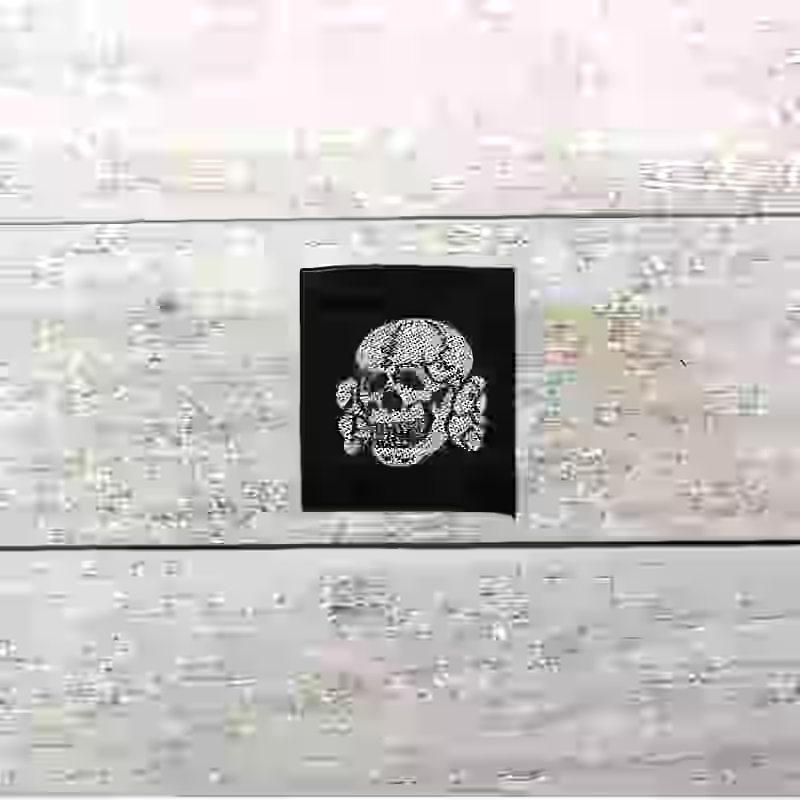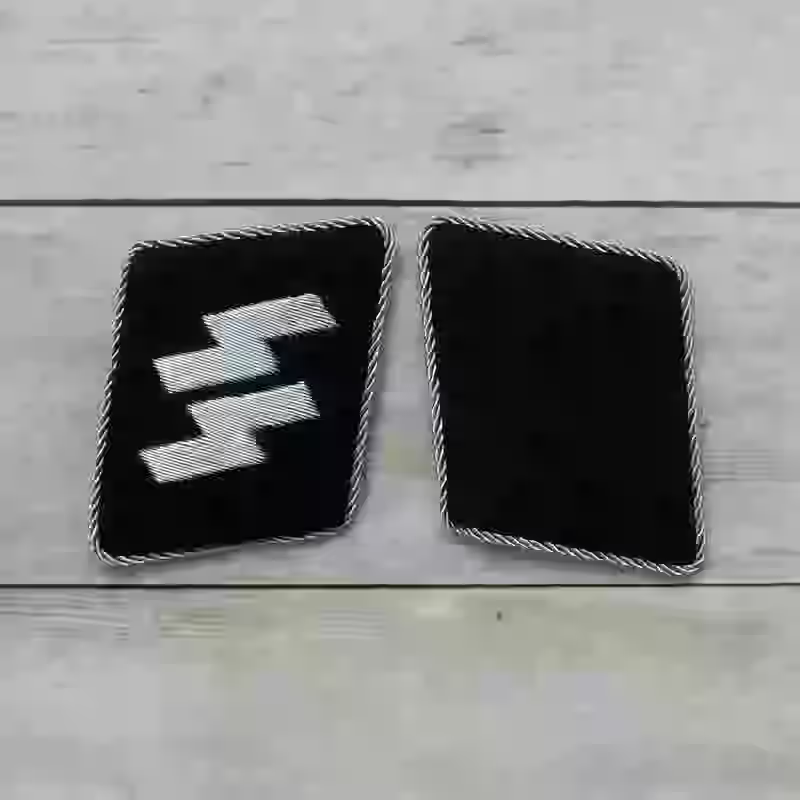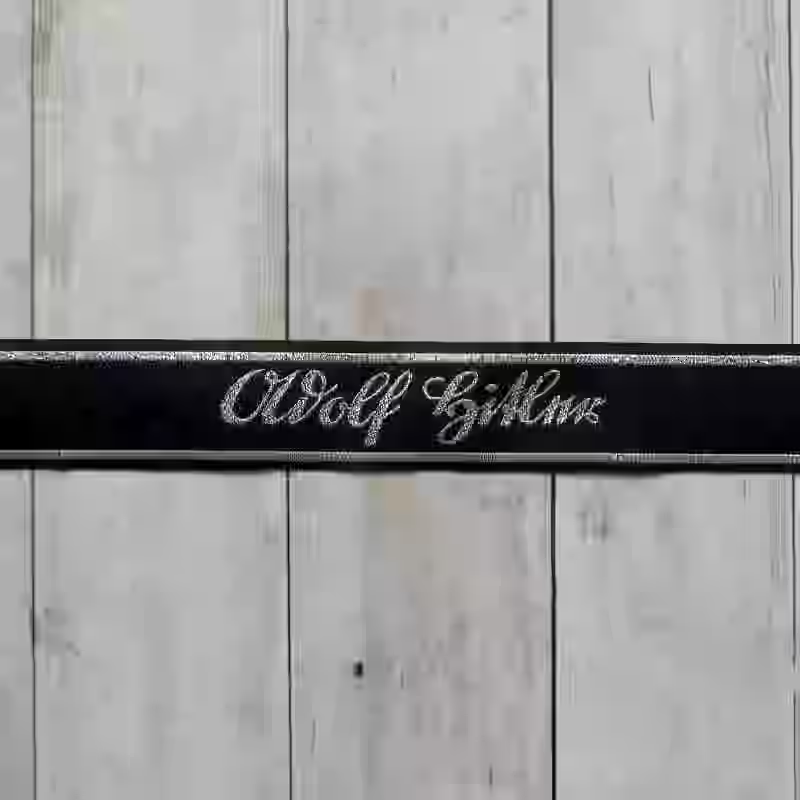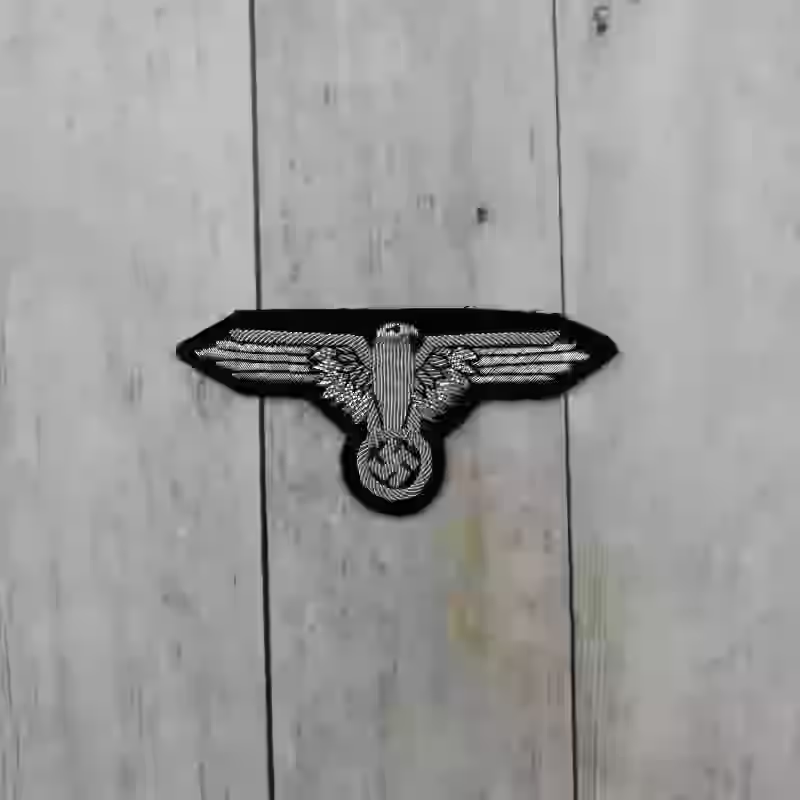
Waffen-SS Officer's Cap Skull
5.00 €
Explore a significant piece of World War II history with this Waffen-SS officers silk woven cap skull, a rare and meticulously crafted WWII German military collectible. This iconic insignia, associated with the elite 3rd SS Panzer Division “Totenkopf,” was designed for the M40, M43, and M44 field caps. The skull and crossbones emblem, a hallmark of the Waffen-SS, represents a complex and sobering chapter of military history. Below, we provide a detailed examination of its historical context, material composition, and enduring value for collectors and historians.
Historical Background
The Waffen-SS officers silk woven cap skull was worn by commissioned officers of the Waffen-SS, the combat arm of Nazi Germany’s Schutzstaffel (SS), from 1939 to 1945. Specifically, this insignia was prominently displayed by officers of the 3rd SS Panzer Division “Totenkopf”, formed in October 1939 from the SS-Totenkopfverbände (SS-TV), the units initially responsible for administering concentration camps. Known as “Totenkopf” or “Death’s Head,” this division earned a fearsome reputation for its role in major campaigns, including the invasions of France, the Soviet Union, and the Battle of Kursk.
The Totenkopf skull and crossbones, a traditional military symbol dating back to 17th-century European hussar regiments, signified mortality and defiance. The Waffen-SS adapted this emblem to project an image of unyielding loyalty and elite status within the Third Reich. For the 3rd SS Panzer Division, the skull became a badge of prestige, worn by ranks such as Obersturmführer to Standartenführer on field caps used in both ceremonial and combat settings. The insignia’s stark design reflected the division’s ideological fervor and its role as a highly disciplined, fanatical fighting force, making it a potent symbol of authority and fear during WWII.
Material & Condition
This Waffen-SS insignia is crafted from high-quality silk woven with fine aluminum thread, set against a black wool or felt background. The use of aluminum thread, often hand-stitched or machine-embroidered, creates a striking metallic sheen that highlights the skull’s intricate details, measuring approximately 3.5 cm wide by 2.5 cm tall. The black background provides a stark contrast, enhancing the emblem’s visibility on the M40, M43, or M44 field caps. Manufacturing techniques varied slightly, with early war examples (1939–1942) often featuring hand-stitched details, while later pieces (1943–1945) utilized machine embroidery for efficiency.
Authentic examples typically exhibit signs of aging, such as slight fraying along the edges, fading of the black background, or tarnishing of the aluminum thread due to oxidation. Collectors should note that high-quality reproductions exist, often distinguished by overly precise stitching or modern synthetic threads. Original pieces, however, retain subtle imperfections from wartime production, such as uneven thread tension or minor variations in skull design, reflecting the craftsmanship of German textile workshops like those in Dachau or Munich.
Collector’s Insight
The Waffen-SS officers silk woven cap skull holds immense value as a Third Reich memorabilia piece due to its rarity, historical significance, and direct connection to the 3rd SS Panzer Division “Totenkopf.” Its battlefield provenance and association with one of the most infamous Waffen-SS units make it a focal point for military historians, museum curators, and serious collectors of historical German artifacts. The insignia’s craftsmanship, combining delicate silk and metallic thread, further enhances its appeal as a testament to wartime textile artistry.
This item attracts a range of collectors, including those specializing in Waffen-SS militaria, WWII reenactors seeking authentic uniform components, and institutions curating exhibits on the Third Reich. However, its sensitive historical context demands respectful handling. Collectors are encouraged to approach such artifacts with an educational mindset, using them to foster discussions about the complexities of WWII history rather than glorifying the ideology they represent.
For preservation, store the insignia in a climate-controlled environment, ideally in an archival display case to protect against moisture and UV damage. Displaying this piece in a museum-quality shadow box with accompanying historical documentation enhances its educational value. As a WWII German military collectible, this cap skull serves as a tangible link to the past, offering insight into the symbolism, craftsmanship, and historical weight of the Waffen-SS during one of the most tumultuous periods of the 20th century.
Historical reproductions only. Janoor Militaria does not endorse the ideologies of Nazi Germany or any extremist groups.


